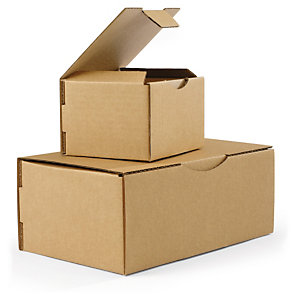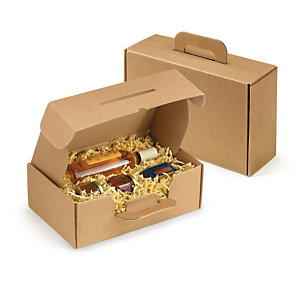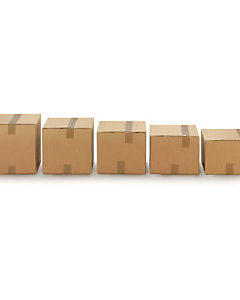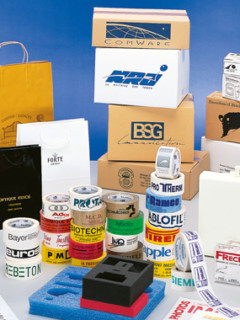Cardboard is undoubtedly a key material in packaging. Not only because of its practical properties and wide applicability, but it is also a way of packaging with respect for nature. Using paper instead of plastic is the most popular way to package more economically today. And that’s why the popularity of this packaging material is increasing on the market. What are the options and types of adhesive tapes and their usability? And what type of cardboard to choose for transporting goods?
Choosing the right thickness of cartonboard is key
The protection of the product during transport or storage depends on the choice of carton thickness. The more fragile or heavier the product, the more protection it needs and therefore the thicker the packaging. The packaging industry offers several options for layering cartonboard. Paperboard is composed of flat, corrugated and other flat papers. It can be assembled from several layers. The more grooves, the stronger and more durable the paperboard. This is then called three-layer or five-layer cardboard.
Three-ply cardboard is the thinnest thickness of cardboard. It is ideal for packaging lightweight products that are not sensitive to shocks during transportation and storage. It is suitable, for example, when shipping clothes. This single-groove paperboard is generally sufficient for small orders delivered in low-risk shipping conditions. It is also suitable for light weight items.
Will a thicker cardboard replace good cushioning material?
A padding material is used to secure products in the packaging to prevent impacts on the inside. It is also used to separate different items so that they do not bump into each other. The groove in carton packaging is used to fill the gap in the packaging. It prevents impacts from the outside of the packaging that could damage both the packaging itself and the products inside.
Thefive-layer double-groovedpaperboard is 50% stronger than single-grooved paperboard. It is ideal for protecting fragile products or products whose weight does not allow the use of triple-layer board. It can withstand weights of up to 40 kg and is therefore used, for example, for packaging books, decorative items, small household appliances, crockery and so on.
When to choose reinforced five-layer cardboard?
Reinforced double-groove cardboard is 50% more durable, is thicker and contains a barrier against shocks and the risk of perforation. It contains a shock absorber that protects the contents of the box in the event of an impact and can withstand loads of up to 70 kg. It is resistant to cracking, moisture, temperature changes and vertical compression and is therefore recommended for the export of semi-heavy loads in heavier transport conditions.
Seven-layer corrugated board
Despite its light weight, seven-layer triple-groove corrugated board is 30% stronger than reinforced double-groove corrugated board. It is the strongest and best protecting type, allowing the contents of the box to be protected in the event of a collision due to impact. This type of cardboard can withstand very heavy loads (up to 500 kg). It is therefore ideal for boxes that can be transported on pallets or for transporting very heavy products such as household appliances or furniture, for example.
Its triple thickness makes it resistant to cracking, moisture, temperature fluctuations and vertical compression. It is very strong and suitable for repeated use. This makes it even more economical and environmentally friendly. Its triple wall thickness protects very fragile items such as electronics, artwork or glass. Due to its properties, triple groove cardboard is recommended for heavy-duty transport, export and long-term storage.
Several factors need to be taken into account when making the right choice
- The right size saves both nature and costs. The right size and volume of packaging play an important role in reducing transportation costs and trying to reduce waste. Correctly sized packaging is also essential for the safety of goods. If the box is too large, the products being transported will move around in it, increasing the risk of damage.
- The nature of the goods determines which type of packaging to choose. Some goods are particularly sensitive to heat, cold, humidity, etc. Others may pose a risk if broken or spilled during transport (damage to other goods, release of toxic substances, etc.). In this case, it is necessary to contact experts who will propose a specific packaging solution. For example, there are insulated cardboard packaging for food or pharmaceutical products. There are also cardboard packaging specifically designed for bottles.
- Fragile goods need to be packaged carefully. If the products being transported are very sensitive to impact, it is always advisable to add cushioning material to the packaging. This will protect them better. The appropriate size of the packaging is also essential so that the filling material can be integrated into it. Cardboard packaging with integrated filling is also suitable for transporting fragile goods.
- Packaging as an expression of the company’s idea. Is it necessary to add value to the product and adapt the packaging to the company’s requirements? Modifying the shape of the carton, colours or adding a logo are the options we offer our clients. There are really many possibilities of personalizing packaging!















